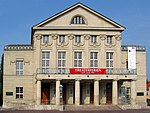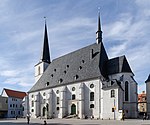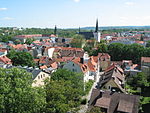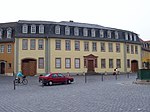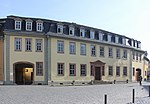Bauhaus Museum Weimar
1995 establishments in GermanyArt museums and galleries established in 1995Art museums and galleries in GermanyBauhausDesign museums ... and 1 more
Museums in Weimar

The Bauhaus Museum Weimar is a museum dedicated to the Bauhaus design movement located in Weimar, Germany. It presents the Weimar collections of the State Bauhaus, which was founded in the town in 1919. The museum is a project of the Klassik Stiftung Weimar and is located near the Weimarhallenpark. Originally opened in 1995, it is now housed in a new building since April 2019.
Excerpt from the Wikipedia article Bauhaus Museum Weimar (License: CC BY-SA 3.0, Authors, Images).Bauhaus Museum Weimar
Stéphane-Hessel-Platz,
Geographical coordinates (GPS) Address External links Nearby Places Show on map
Geographical coordinates (GPS)
| Latitude | Longitude |
|---|---|
| N 50.985 ° | E 11.324166666667 ° |
Address
Bauhaus-Museum Weimar
Stéphane-Hessel-Platz 1
99423 , Jakobsvorstadt
Thuringia, Germany
Open on Google Maps



